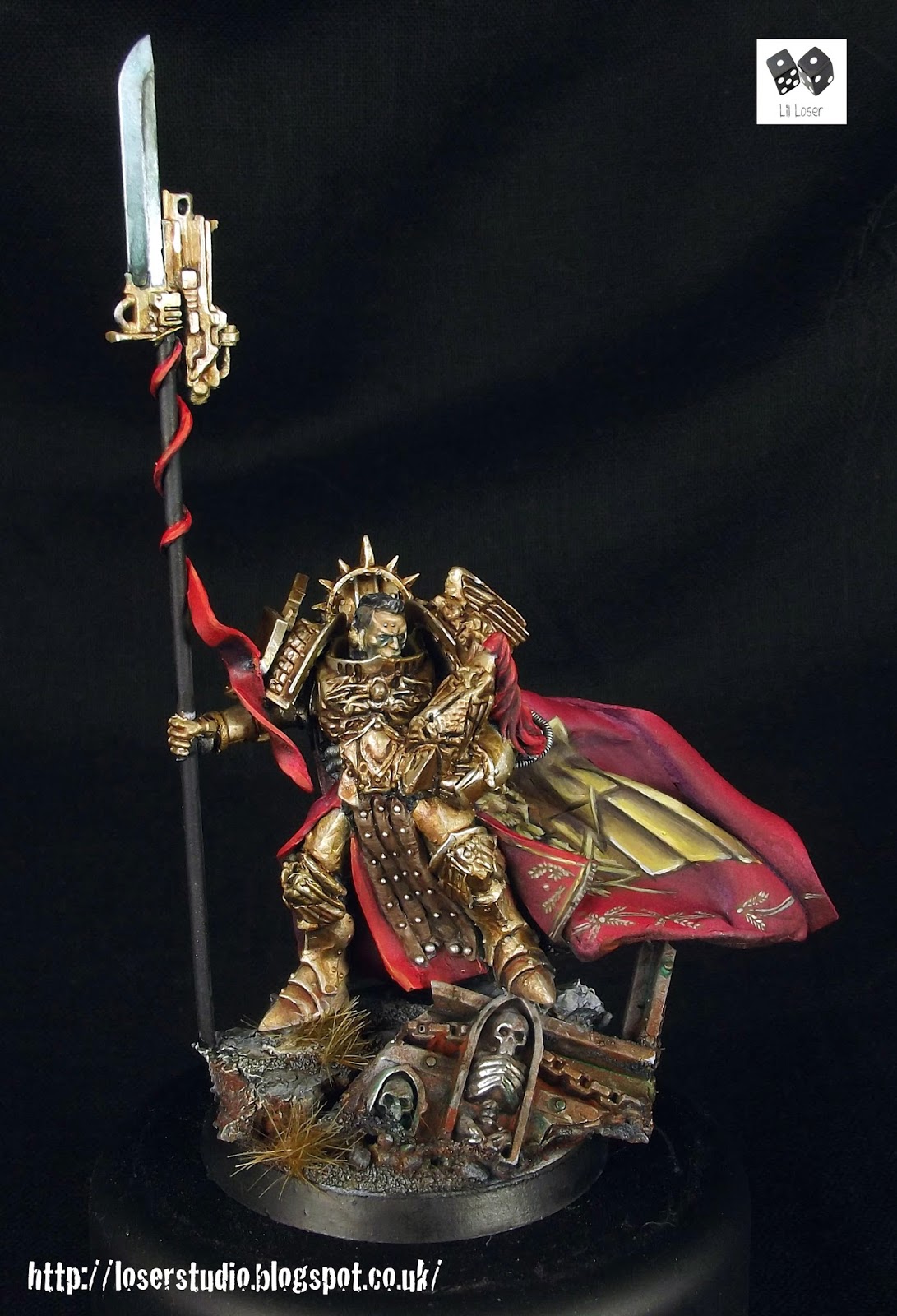Horus Lupercal Warmaster
Horus Lupercal Master of the Imperium. To commission this piece please contact lillegendstudio@gmail.com for full details

Sigismund The Black Templar, Dorn's Herald, The Emperor's Champion
Lil'Legend Studio offers high quality paint jobs for your miniatures and armies.

Infamy Bust Uncle John
I wanted a darker vibe with this miniature so I used the notes written by Grant Morrison in the back of Arkham Asylum concerning the Mad Hatter. I painted the irises in different colours with a purple undertone to the flesh, as if the blood weren't quite a healthy red. The more I painted it the more it resembled Arsene Wenger! But with a parrot and a capuchin!

Roboute Guilliman
They shall be pure of heart and strong of body, untainted by doubt and unsullied by self-aggrandisement. They will be bright stars on the firmament of battle, Angels of Death whose shining wings bring swift annihilation to the enemies of Man. So it shall be for a thousand times for a thousand years, unto the very end of eternity and the extinction of mortal flesh.

Sunday 22 December 2013
 12:49
12:49
 Unknown
Unknown
Monday 16 December 2013
 00:36
00:36
 Unknown
Unknown
| Forge World have produced another master piece of the model. My hat is well and truly doffed to Edgar Skomorowski. Aurelian poses some very difficult challenges to the painter, chief amongst these being the gold script lining his face. A beautifully evocative image, but a nightmare for the figure painter. Forge World very sensibly painted Lorgar's skin lined with black. Gold does not show up well on skin tones nor does it give any meaningful contrast. At best it would look neat, most likely it would be a mess; so I decided to cheat. I painted Aurelian's face as if it were underlit by his suit. This gives the skin a golden tone before I start painting the Scripture, but also halos the Primarchs head quite nicely. I decided to go for yellow over a more contrasting blue to represent fire (Lorgar's head is a bright yellow, the under light is organge, his armour is red and the base is gret/ black). I also had Willaim Blake's Book of Urizen plates in my head and I couldn't escape trying to represent the damnation of the character through the painting. The image on his cloak is a nod to Blake (see image below). I'll leave the interpretation of the image in relation to Lorgar to you as I beleive there are multiple reasons why the Primarch is sometimes known as the Urizen. Myles |
Wednesday 11 December 2013
 13:08
13:08
 Unknown
Unknown
Sunday 8 December 2013
Friday 6 December 2013
 11:32
11:32
 Unknown
Unknown
An Eagle swooped down upon a Serpent and seized it in his talons with the intention of carrying it off and devouring it. But the Serpent was too quick for him and had its coils round him in a moment; and then there ensued a life-and-death struggle between the two. A countryman, who was a witness of the encounter, came to the assistance of the eagle, and succeeded in freeing him from the Serpent and enabling him to escape. In revenge, the Serpent spat some of his poison into the man's drinking-horn. Heated with his exertions, the man was about to slake his thirst with a draught from the horn, when the Eagle knocked it out of his hand, and spilled its contents upon the ground. "One good turn deserves another."
Aesop Fable
++++++++++++++++++++++++++++
Some freehand work for a Sons of Horus Commission. If you would like to improve your freehand technique try using a short haired round brush. This allows greater control over the movement of the strokes.
Myles
P.S Oh the quote story...has absolutely nothing to do with the Heresy. Unlike my other quotes that I can claim some kind of tentative contextual link to the wider Horus Heresy this is just a nice story.
Tuesday 3 December 2013
 14:21
14:21
 Unknown
Unknown
Phew...what a piece. This felt more like a battle than a painting exercise. This was a difficult piece to attempt - not only are both miniatures exceptionally detailed but they can act as centerpieces all by themselves. I couldn't shake the idea that both Ferrus and Fulgrim were miniature suns exerting their individual gravity on the scene. The space marines littering the base are reduced to spectators (space particles if I were to belabour the metaphor) destroyed by the two titans dueling for the fate of Mankind's future.
I aimed to contrast the characters by their skin tone. Fulgrim has a blue undertone with a slightly lighter skin tone. Ferrus has more earthy, oily tones. The presentation of the armour is something of a contrast too with Ferrus weathered and dinted by battle. Fulgrim on the other hand is untouched by the tumult of battle around; he is a fey creature - not of the world of rust, grinding destruction and fire that Ferrus inhabits.
It will be my great pleasure to paint Angron next as a personal project (well, Angron won't be the very next Primarch I paint...the Great first Son of the Imperium will be the next).
Myles
Friday 29 November 2013
 07:37
07:37
 Unknown
Unknown
 RSS Feed
RSS Feed
 Twitter
Twitter






























































